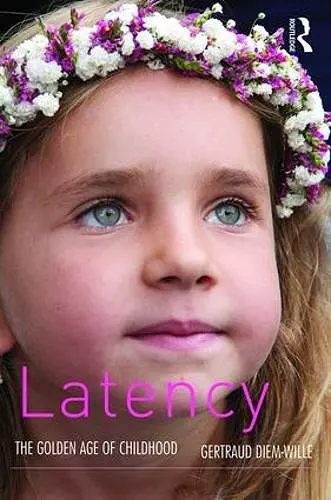Latency
The Golden Age of Childhood
Format:Paperback
Publisher:Taylor & Francis Ltd
Published:30th Nov '17
Should be back in stock very soon

This book concerns the child's emotional and cognitive development during the period of latency. It constitutes a bridge between the first stormy years of child development and adolescence. The conflicts and libidinous wishes of early childhood are relegated to the background and become latent: in general, an emotional and physical stabilization occurs. The child is attempting to find its place in the world. Accordingly, its primary interest is no longer in itself or its parents, but in the outside world. This is particularly manifested in forms of play typical for this age range, strongly influenced by imitation of the adult world and reality-oriented. At the same time, the body is explored (and its awareness is strengthened through numerous games involving movement, skill and competition. In all societies, this period is when school begins.The latency development includes new physical and intellectual capabilities as well as the development of new ways to deal with problems of social hierarchy; gradually, tolerance of tensions and a stabilization of identity are developed as well. The acquirement of knowledge and new forms of independence are at the forefront, leading Freud to speak of the "golden age" of childhood. Due to increased emotional defences, feelings are now shown less directly. The reaction-formation and sublimation are the central defensive mechanisms of latency. However, if a regression into the behaviour of early childhood occurs-bound to be embarrassing to the child who is now more oriented to the outside world-a massive form of emotional denial as a defence mechanism can occur.This book closes a gap in psychoanalytic literature. Here, the significance of this important new period is emphasized. When development is disturbed through massive inner conflicts, earlier disturbances re-emerge that are manifested in learning problems, obvious behavioural problems, temper tantrums, and tendencies towards withdrawal or violence. Numerous examples and scenes from family life and school supply a dynamic picture of psychological latency. The detailed case studies from child psychoanalysis afford insight into psychoanalytic techniques with children. The method of psychoanalytic observation allows the reader emotional empathy with what occurs in therapy; both the feelings of the children and of the therapist can thus be experienced and understood.
"This is an exceedingly wise book. It covers a seriously neglected area in psychoanalytic literature and theory. The clinical and historical illustrations, both of healthy thriving intelligent childhood and - equally- of painful failures in development and in thinking, make it a very illuminating and good read."-Anne Alvarez, Ph.D., MACP Consultant Child and Adolescent Psychotherapist
ISBN: 9781782205432
Dimensions: unknown
Weight: unknown
192 pages